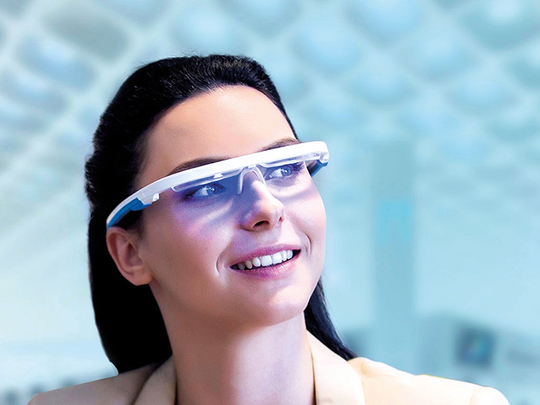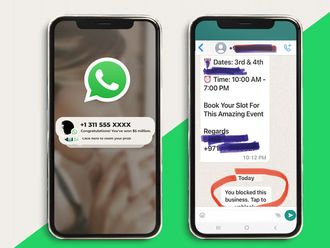
Dubai
Most of us are getting exhausted due to improper sleeping habits caused by the decreased activity levels and increased time on digital screens.
Studies have shown that sunlight gives us energy for the day and there are people who don’t get enough sunlight to charge their efficiency and energy.
A new light-therapy eyewear — AYO — is using the blue-light technology to reverse some of the harm caused by improper sleeping habits to help boost energy levels, optimise sleep and beat jet lag during travels.
“It has been scientifically shown to be more efficient for the sleep hormone melatonin. By doing so, we can regulate our sleep cycle by wearing the glasses for 20 minutes a day to get you back on track. AYO’s smart algorithms have been developed with an in-depth knowledge of Chronobiology and light treatment,” he said.
The glasses, somewhat similar to Google Glass, connect through a mobile app — goAYO — with smart programs for sleep, travel and energy.
There are also other eyewear similar to Ayo such as Luminette 2, Pegasi and ReTimer Gen 2.
The battery on the AYO lasts for seven days and the battery on the case lasts for two weeks. It is priced at $299.
“The app personalises the experience because people have different body clock to go to sleep. We take this into account to provide the most optimum time for using Ayo to get exposed to the blue light. The user creates a profile and based on the profile, the app tells the user when to get exposed to the light and for how many minutes,” he said.
Usually, he said that it is about 20 minutes but it can go up to 35 minutes depending on the program. “Our aim is to help people feel energised in a natural way,” he said.
In general, he said that blue light is there in all the digital screens but the light is not efficient and it does not focus where it should be.
“In that way, it is not that intense. The other thing is the timing of the usage. If you are exposed to digital screens, it might not cure the sleep but make it more difficult to fall asleep,” he said.
Moreover, he said that macular degeneration depends on the wavelength. There is a wavelength of blue light which is close to UV light, between 400nm and 450nm.
The 475nm wavelength is the most efficient for melatonin and that is the wavelength of blue light used in AYO, he said.
Ayo was launched in mid-2015 and crowdfunded on Indiegogo and then started delivering the product by the start of last year.
“In 2017, we started expanding our markets and it is available in the UAE at SharafDG. It weighs only 35 grams, foldable and rechargeable. It comes with a protective rechargeable case for the device. We have sold over five million devices worldwide. We aim to double the total sales and go into new retail channels and partners,” he said.
The company has raised between $500,000 and $1 million so far and looking to raise more than $1 million through “Series A” funding.
Dimitrov said the Gulf market is very interesting as there are a lot of business people who travel a lot in different time zones.
He also added that one Ayo can be used by different persons on different smart devices. There is no limit and not at the same time.
What is blue light?
Sunlight contains blue light and ultraviolet, whereas blue light is part of the visible light spectrum while ultraviolet is part of the non-visible light spectrum.
Every person is exposed to ultraviolet every day when out in the Sun and it has a wavelength between 100nm and 400nm. Studies show that visible light has a wavelength between 380nm and 780nm. The most harmful blue light to the retina is between the wavelength of 415nm and 455nm.
Our eyes are exposed to different wavelengths of harmful blue light emitted by the Sun, LED lights and smart devices such as smartphones, tablets, computers, etc. Exposure to blue light suppresses the production of sleep hormone melatonin.
A certain wavelength of the blue light spectrum is associated with the development of age-related macular degeneration. A shorter wavelength causes the body to produce less melatonin and that is why operating systems have an option to activate blue-light filtering when using at night.












